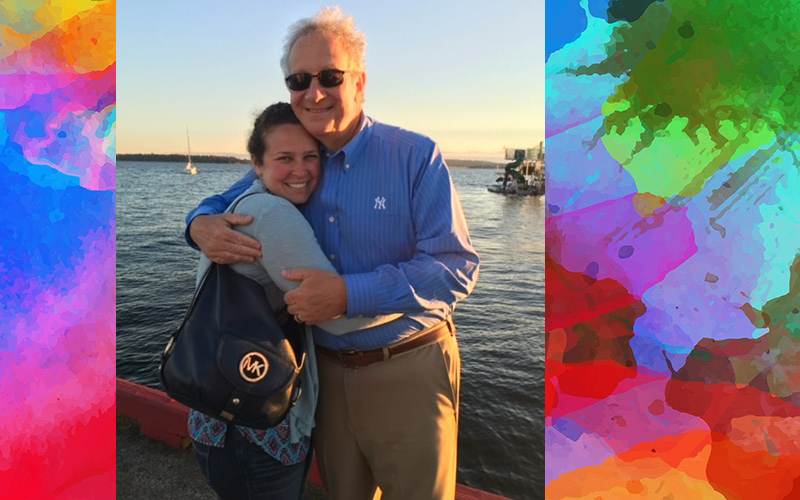
Three weeks before COVID-19 hit the U.S., inpatient physical therapist Jennifer Katz learned her dad needed a bone marrow transplant to treat myelofibrosis, a rare blood disease he had been diagnosed with in 2016. BMT is the only cure for this disease. A practicing physical therapist for seven years, including her most recent 18 months at Valley, Jennifer put her medical pedal to the metal when she started researching the BMT process and resources available to help make her dad’s transplant successful.
Immediately finding Be the Match, the national bone marrow registry, Jennifer learned the organization not only builds up the donor registry (easily done by a simple cheek swab), but raises funds for ongoing research for transplants and outcomes, provides grants for patients needing financial assistance, and works to raise awareness and offer education. Passion ignited by her quest to help her dad, Jennifer jumped in and never stopped volunteer efforts to build the blood stem cell registry, despite challenges due to the pandemic.
Jennifer’s story
“I started planning outreach campaigns as a volunteer with the Be the Match team, including cheek swab drives, in order to search for a 10/10 match for my dad while simultaneously adding to and diversifying the registry. Then COVID hit, everything came to a halt, and all public events were cancelled. I turned to social media and good ole’ verbal advocacy to educate and encourage people to join the registry.
“My dad had his transplant on July 29, 2020 at the Seattle Cancer Care Alliance after a week of medical prep including chemo and radiation. Four days later he was admitted to the UW Medical Center Seattle Cancer Care Alliance transplant floor and spent a month in the hospital, including a week-long stint in the ICU, until he was stable again to be discharged. The first 100 days post-transplant require close monitoring and so my parents lived at the hotel next door to the SCCA, and when dad was discharged from the hospital back to the hotel, he had daily checkups, blood draws, transfusions, and other multi-disciplinary visits. My mother and I were his main caregivers. Luckily the transplant was successful, he engrafted quickly and started recovering, but it was a very long road. After 100 days, he was well enough to return back home to Kent and with continued monitoring, checkups, and healing, he is doing very well following a successful transplant and will be celebrating his one year transplant anniversary, or ‘re-birthday’ as Be the Match calls it, at the end of July.”
How to join the Be The Match registry
The Be The Match registry is for those ages 18 – 44. It’s free and very easy to join, just a simple, sterile cheek swab sent to you and returned through the mail. Many people join the registry but are never actually called to be a donor. “Only every 1 in 413 people on the registry will go on to be a donor due to everything that goes into being a match for another person,” says Jennifer. “This means the bigger the registry, the higher chance of someone finding their needle in the haystack to save their life. And if one is ever contacted to donate, over 90% of the transplants are done via stem cell transfusion, so it’s not much different than giving blood. Drilling into the bone is rarely done anymore.”
Members of minority communities and same-sex male partners are especially encouraged to join the registry
Because minority populations have a much lower chance of finding a match, finding a cure for their blood or bone marrow disease is reduced as well—so there’s an even greater need to get people who are a part of minority communities to join the registry. Also, unlike CDC restrictions placed on blood donation, same-sex male partners are able and encouraged to join the registry.
Continuing to advocate for and support Be The Match
“We were so lucky to have the support of and resources through Be the Match before, during and after Dad’s transplant,” says Jennifer. “I want to make sure I do everything to continue to advocate for and support Be the Match and the effort to build the bone marrow registry so every person who needs a bone marrow transplant to cure a blood cancer or disease will have that chance at survival and a longer life. Every person can participate in some way or another to support the cause and together, I hope we can provide a bone marrow transplant to every single person who needs one.”
Learn more about Be The Match. Join the registry.


